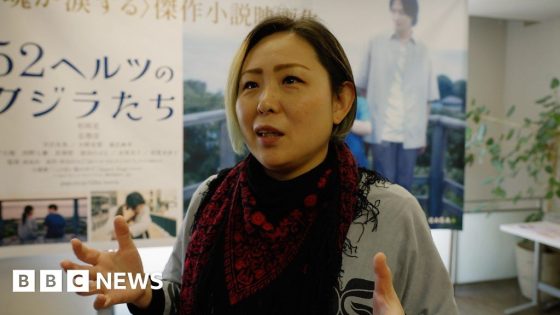By Andrew Osborn
MOSCOW (Reuters) – It boasts a replica of the ‘Tsar Bomba’, the most powerful nuclear bomb ever tested, slick presentation stands extolling the virtues of four Ukrainian regions Russia says it has annexed, and artwork lionising the Russian army in Ukraine.
After organisers said over 18 million people had flocked to Moscow’s “Russia” exhibition in eight months, making it one of the top 10 visited places on the planet, President Vladimir Putin has decreed it will become a permanent landmark.
Originally conceived as a temporary Kremlin-backed project designed to fuel patriotism and promote the authorities’ view of Russia’s past, present and future, Putin, on his fifth visit to the exhibition on Monday, told an audience there:
“We have things to show off, we have things to be proud of, but that’s not all. It’s also important to present it all with talent and beauty. We need to create the conditions to show what the country is doing, how it is living, and what we need to achieve. That’s why… we’ve agreed to set up a national centre.”
The move is emblematic of a drive by Putin to unite Russians behind him at a time of war when the Kremlin is promoting a single, strong patriotic narrative and punishing those who dissent from it.
Critics have been branded “foreign agents” or extremists, and some have been handed long jail terms for discrediting the armed forces or spreading “fake news” about the war.
The “Russia” exhibition opened its doors in the run-up to the election in March this year which handed Putin a fifth presidential term. It has since served as a venue for political and social events – discussions focused on the war or on the traditional family values Putin has championed – becoming a public forum where the ideology he espouses is promoted.
Housed for the last eight months in a Soviet-era Moscow park built under Josef Stalin to showcase the USSR’s achievements, it has been used by the Kremlin to stoke a feel-good sentiment as Russia is prosecutes what it calls a “special military operation” in Ukraine.
“I feel immense pride,” a visitor called Margarita told Reuters.
“We (Russians) are envied for our unity, for the friendship of all our peoples, for the way we help each other. I don’t have the words to express all my feelings and emotions of what I have seen and heard here.”
PERMANENT FIXTURE
At Putin’s behest, the exhibition – which also appears designed to persuade Russians that their country can keep developing on the home front while being at war – will be moved across the city and become a permanent museum in a complex that was previously used to host major commercial exhibitions.
The sprawling installation has a soft side too, showcasing traditional Russian folk culture and cooking along with vital economic statistics and homegrown high-tech.
A popular draw for school groups and heavily promoted to families, people from across Russia have travelled to the capital to take it in at a time when the authorities have told Russians they should take inspiration from what they cast as the brightest moments in their country’s history to prevail in an “existential” struggle with the West.
A presentation stand for Crimea, the Black Sea region which Russia seized and annexed from Ukraine in 2014, gives visitors the chance to have their photograph taken with glossy images of the peninsula’s landmarks. It shows a sun-kissed map, declaring: “Crimea. Here is where the motherland starts.”
The four Ukrainian regions the Kremlin says it annexed in 2022, what it calls Russia’s “new regions” – Donetsk, Luhansk, Kherson and Zaporizhzhia – are all given similar treatment, despite the fact that Moscow does not control any of them fully.
Kyiv’s political leadership says it will fight until its forces regain control of all four regions which it says were stolen from it in a brutal colonial-style war of conquest.
The Moscow exhibition shows Russia is unlikely to give them back easily.
Holding his small son in his arms, Andrei, a visitor from Donetsk, said he felt pride for what he was seeing and was wowed by how Russia’s vast expanse, including the “new regions”, was represented.
“I am originally from Donetsk and very happy that the new regions are fully presented,” he said.
(Reporting by Reuters; Writing by Andrew Osborn; Editing by Christina Fincher)
Source Agencies


